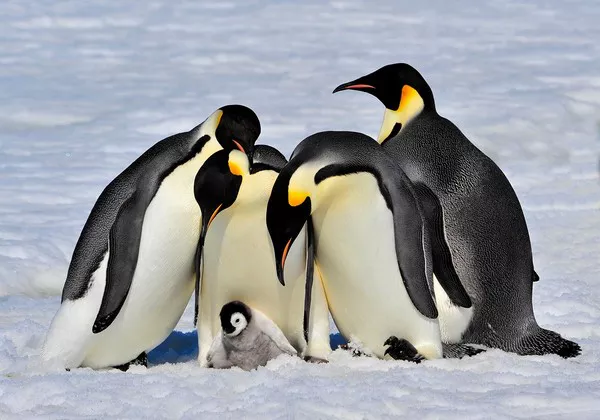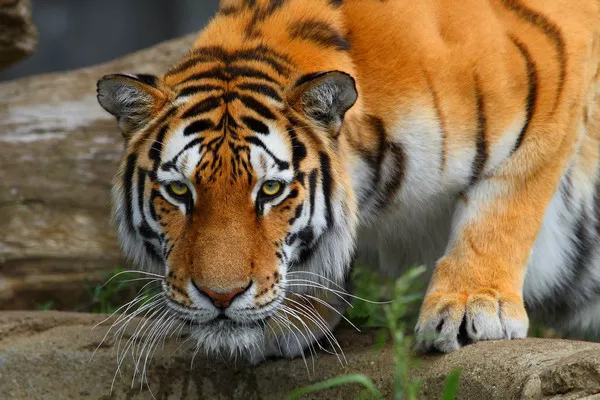Antarctica, the frozen continent at the bottom of the world, is a land of extremes. Its harsh climate and icy landscapes may seem inhospitable, but beneath its icy surface lies a thriving ecosystem teeming with remarkable wildlife. From colossal marine mammals to agile seabirds, Antarctica is home to an array of fascinating creatures adapted to survive in one of the most extreme environments on Earth. In this article, we’ll explore the top ten animals you can encounter in Antarctica, offering insights into their unique adaptations and behaviors.
Top 10 Animals You Can See in Antarctica
1. Emperor Penguin (Aptenodytes forsteri)
Arguably the most iconic Antarctic species, the Emperor Penguin is the largest of all penguin species, standing up to 3.7 feet tall and weighing up to 88 pounds. These majestic birds are superbly adapted to life in the frigid Antarctic environment, with thick layers of blubber and dense plumage providing insulation against the cold. Emperor Penguins are highly social animals, forming large breeding colonies during the Antarctic summer. They undertake remarkable journeys to breed, with males incubating eggs on their feet for up to two months while females forage at sea.
2. Weddell Seal (Leptonychotes weddellii)
Named after British sealing captain James Weddell, the Weddell Seal is one of Antarctica’s most abundant seal species. Recognizable by its stocky build and distinctive “grinning” expression, the Weddell Seal is superbly adapted to life in the icy waters of the Southern Ocean. These seals are skilled divers, capable of descending to depths of over 2,000 feet in search of prey. Weddell Seals are known for their haunting vocalizations, which echo through the underwater realm as they communicate with one another.
3. Antarctic Minke Whale (Balaenoptera bonaerensis)
The Antarctic Minke Whale is one of the smallest baleen whales, measuring up to 35 feet in length and weighing up to 10 tons. Despite their diminutive size, these whales are formidable predators, feeding on small schooling fish and krill. Antarctic Minke Whales are highly elusive, often evading detection due to their relatively low profile and swift swimming speeds. They are commonly sighted in the waters surrounding Antarctica during the austral summer, where they come to feed in the nutrient-rich seas.
4. Adélie Penguin (Pygoscelis adeliae)
Named after the wife of French explorer Jules Dumont d’Urville, the Adélie Penguin is a charismatic species found along the coastlines of Antarctica and its surrounding islands. With their distinctive black and white plumage and bright red bills, Adélie Penguins are a familiar sight in the Southern Ocean. These agile birds are skilled swimmers and adept hunters, preying on krill and small fish in the icy waters of the Antarctic seas. Adélie Penguins are known for their playful behavior on land, engaging in courtship rituals and nesting in large colonies during the breeding season.
5. Leopard Seal (Hydrurga leptonyx)
As one of Antarctica’s top predators, the Leopard Seal cuts a formidable figure in the frigid waters of the Southern Ocean. With its sleek, muscular body and distinctive spotted coat, the Leopard Seal is a formidable hunter, preying on a variety of marine species, including penguins and fish. These apex predators are known for their intelligence and agility, often ambushing their prey from below with lightning-fast strikes. Despite their fearsome reputation, Leopard Seals are also curious creatures, known to approach boats and divers to investigate their surroundings.
6. Chinstrap Penguin (Pygoscelis antarcticus)
Named for the distinctive black band under their chin, the Chinstrap Penguin is a familiar sight in the Antarctic Peninsula and its surrounding islands. These medium-sized penguins are highly social animals, forming large breeding colonies during the summer months. Chinstrap Penguins are skilled swimmers, using their flipper-like wings to propel themselves through the water in search of krill and fish. They are known for their raucous vocalizations, which can be heard echoing across the rocky shores of their breeding colonies.
7. Wandering Albatross (Diomedea exulans)
The Wandering Albatross is a true icon of the Southern Ocean, with the largest wingspan of any bird species, reaching up to 11 feet across. These majestic seabirds are expert gliders, using their enormous wings to soar effortlessly above the waves for hours on end. Wandering Albatrosses are highly adapted to life at sea, spending the majority of their lives on the wing, only returning to land to breed. They are known for their incredible navigational abilities, using wind patterns and ocean currents to travel vast distances across the Southern Ocean.
8. Southern Elephant Seal (Mirounga leonina)
The Southern Elephant Seal is the largest seal species in the world, with adult males reaching lengths of over 20 feet and weighing up to 8,800 pounds. These colossal marine mammals are renowned for their impressive size and distinctive trunk-like proboscis, which gives them their name. Southern Elephant Seals are formidable predators, feeding on a diet of squid, fish, and other marine species. They are also known for their epic breeding battles, with dominant males competing for control of breeding territories during the mating season.
9. Antarctic Krill (Euphausia superba)
While not as charismatic as some of the larger animals on this list, Antarctic Krill play a vital role in the Antarctic ecosystem as a primary food source for a variety of marine species. These small, shrimp-like crustaceans form massive swarms in the nutrient-rich waters surrounding Antarctica, attracting predators ranging from whales and seals to seabirds and fish. Antarctic Krill are incredibly abundant, with estimated populations numbering in the trillions, making them one of the most important keystone species in the Southern Ocean.
10. Snow Petrel (Pagodroma nivea)
The Snow Petrel is a small, dove-like bird that is perfectly adapted to life in the harsh Antarctic environment. With its pure white plumage and distinctive black eyes, the Snow Petrel is a striking sight against the icy landscapes of the Southern Ocean. These resilient birds are capable of surviving in some of the coldest conditions on Earth, using their specialized feathers to insulate against the cold and their keen eyesight to locate prey beneath the snow and ice. Snow Petrels are highly adapted to life at sea, spending the majority of their lives on the wing, only returning to land to breed.
Conclusion
Antarctica is a land of unparalleled beauty and diversity, home to some of the most extraordinary animals on the planet. From towering penguins to graceful albatrosses, the wildlife of Antarctica captivates and inspires all who venture into this remote and frozen wilderness. Whether you’re exploring the icy shores of the Antarctic Peninsula or cruising through the Southern Ocean, encountering these incredible animals is an experience you’ll never forget.
You Might Be Interested In:












![10 Most Richest Cities in the United States [Revealed!]](https://www.validdownloads.com/wp-content/uploads/2023/12/Manjula-Pothos.webp)












